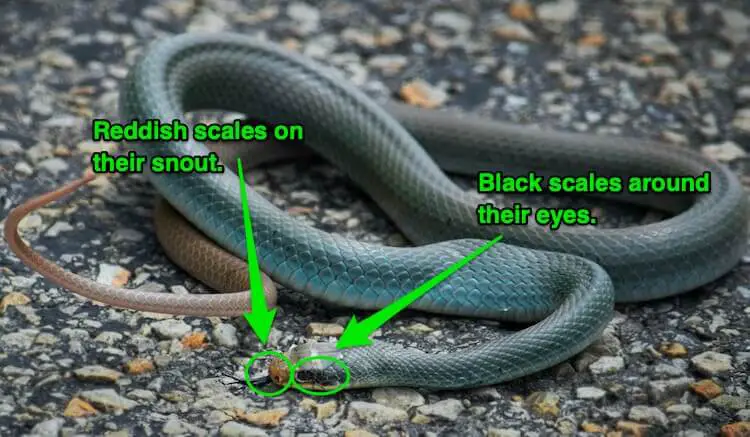

We usually catch only a glimpse of them as they disappear quickly through the vegetation. When threatened, they vibrate their tails to make a buzzing sound that works as a warning and for that reason are often mistaken for rattlesnakes. Even though they are non-venomous, they are still very capable of inflicting a painful bite if cornered. When hunting they hold up their heads up and move very fast through brushes using their keen eyesight. The blue racer will try to escape into the bush and may even climb into low bushes or small trees if threatened. They are active during daytime and prefer to spend most of their time on the ground, but are known to forage both on ground and trees. The blue racers are known to hibernate in large groups during the cold winter months. This speed helps them catch prey or avoid being preyed upon. The species lifespan in the wild ranges from 15 to 20 years. Road mortality and human persecution continue to threaten this small population.As their common name suggests, the blue racer is a very fast snake that can move at speeds of almost 7 Km or 4,3 mph, even so far from the lightning speed of the highly venomous black mamba. However, some threat of development persists on private lands and ongoing succession of habitats in protected areas is resulting in ongoing decline of this species’ habitat. Fortunately, much of this species’ habitat on the island is now protected by provincial nature reserves and land trusts. Habitat loss on Pelee Island due to conversion of land to agricultural use has been the largest threat to the Canadian Blue Racer population. Blue Racers may hibernate communally in large groups. The Blue Racer eats insects, frogs, other snakes, small rodents and birds. As its name suggests, the Blue Racer is a very fast snake and can move at a speed of almost 7 kph. Individuals of this species reach maturity in two to three years and can live for more than 20 years.


Individuals may reproduce each year, but most likely only reproduce every two years in Canada. The eggs hatch in late summer, and the young are 20–30 cm in length. Biologyīlue Racers breed in the spring and females lay an average of 15 leathery eggs, sometimes communally. Females lay their eggs in rotting logs, stumps, vegetation or mounds of decaying matter, under rocks or in animal burrows. old foundations, cisterns) and other underground cavities. Individuals overwinter below the frost line in mammal burrows, rock crevices, anthropogenic structures (e.g. Rocks, logs and other cover objects are important microhabitats that provide retreat and thermoregulation sites. The Blue Racer inhabits grasslands, fields, savannah and open woodlands. states, in Mexico and south to Guatemala. The various subspecies of the North American Racer occur in southern Saskatchewan, southern British Columbia and throughout almost all U.S. This subspecies also occurs south of the Great Lakes in Ohio and west to Iowa. DistributionĪlthough the Blue Racer once occurred on the Ontario mainland, its Canadian distribution is now limited to Pelee Island, in Lake Erie.
#Blue racer full
Eastern Foxsnakes have weakly keeled scales and a checkered belly, and Lake Erie Watersnakes have keeled scales and may have full bands, partial bands or be mostly grey, instead of having dark-bordered blotches. Young Blue Racers may be confused with young Lake Erie Watersnake or Eastern Foxsnake, the only species with a blotched pattern that live alongside Blue Racers on Pelee Island. The often light grey to black Lake Erie Watersnakes have a stout body, usually with some remnants of darker or lighter bands and keeled scales.

The Smooth Greensnake, however, often turns bluish after death. Similar SpeciesĪs an adult this species is the only large, bluish snake in Ontario. Individuals can grow to almost 2 m in length. The dorsal scales are smooth and it has a divided anal plate.
#Blue racer series
Young juveniles are well-patterned with a series of dark-bordered, brown, red, or grey blotches over a grey to tan background. The Blue Racer is tan, pale blue or bluish green with a white or bluish belly and a dark “mask” may be visible around the eyes. The Blue Racer is a subspecies of the North American Racer ( Coluber constrictor). Click for more images Blue Racer Coluber constrictor foxii Family: Colubridae


 0 kommentar(er)
0 kommentar(er)
